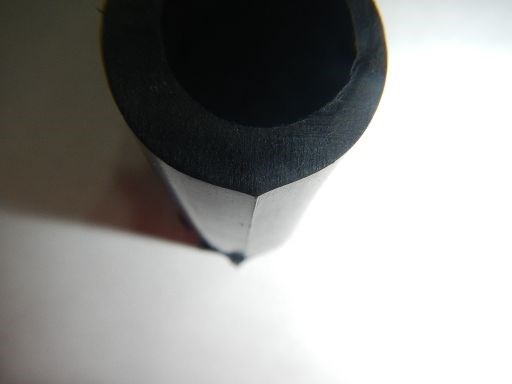The Designer's Edge: Newsflash on Flash
Flash is something everyone involved with injection molds has dealt with at some point, and at times it can be very challenging. However, over the years I have learned that flash is impossible to have if three conditions are met--two of which fall directly on the mold.

Typical flash.
Flash is impossible to have if three conditions are met--two of which fall directly on the mold.
All shut-offs or parting lines must be “true net,” meaning there are no gaps, damage or anything holding the mold open.
The tool must be robust enough to prevent deflection both in line with clamp force and perpendicular to clamp force.
Clamp pressure on the injection molding machine must exceed plastics pressure from the cavity surface area.
It is important to understand these three conditions. If you have two mating surfaces perfectly matched, the tool is robust enough to prevent deflection and clamp pressure exceeds cavity pressure, then absolutely nothing can penetrate the mating surfaces. Venting is often raised at this point. It is a valid point that I will discuss down the road.
In upcoming posts I will take an indepth look at each rule/condition, but today I want to define flash and how it can be misdiagnosed. I have observed many people misinterpreting mismatch or rolled cavity edges as flash.
On rolled cavity edges, the defect can be felt from both directions. Plus, on some critical parting lines a very small rolled edge can create the defect. I have seen parts with a rolled edge of .003 cause an issue. This can easily happen during the polishing process if the bench hand is not very careful.

Rolled edge.
With parting line mismatch, the defect can only be felt from one direction.

Mismatch.
Another defect is“feather flash, ” which is a result of a lack of clamp force on the molding machine. The tool is blown open allowing plastic to leak between the two parting lines. Then when plastic pressure resides, the clamp force pinches the flash causing feather flash.

Feather flash.
Critical mold areas that require support to prevent deflection are typically in the center or the runner and gate areas. The center being the weakest area of the mold and the gates and runner areas experience extreme plastic pressures.
My next post (on February 6th) will focus on tool and design to reduce tool deflection.







.jpg;maxWidth=300;quality=90)


_300x250 4.png;maxWidth=300;quality=90)


